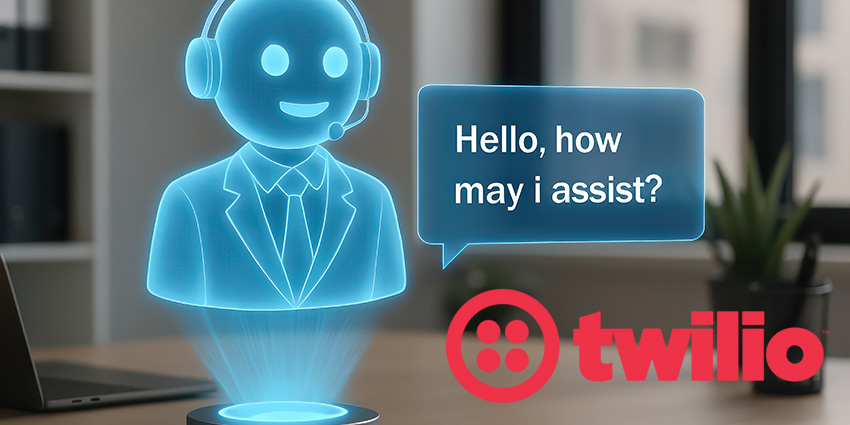As organisations increasingly invest in AI, the focus in 2026 is shifting toward predictive CX solutions that deliver real-time impact, not just vanity dashboards. As this shift accelerates, decision-makers are now re-evaluating which platforms truly translate insights into outcomes.
Below, we evaluate four leading CX AI providers, comparing their data architecture, model performance and integration maturity – key traits for decision-makers comparing customer experience tools.
What Matters When Choosing Predictive CX AI
Before looking into specific vendors, it’s useful first to step back and remember what you need to consider. Below are three factors it’s important to keep in mind:
Data architecture & consolidation – The ability to ingest, unify and analyse multiple touchpoints (web, mobile, contact centre, social) is critical. Without a real-time data layer your predictions will lag. Building a “vendor-neutral data layer” is increasingly becoming a central piece of the CX tech stack. In fact, whilst 94% of businesses are investing more in AI, only 21% have fully embedded AI into their operations.
Model performance & actionability – It’s not sufficient to just surface insights; models must forecast behaviour (churn risk, next-best-action) and feed downstream workflows. AI can anticipate customer needs before they arise by analysing vast amounts of customer interaction data.
Integration maturity & scalability – Even the most sophisticated models mean little without seamless integration. The best customer experience tools plug into existing systems (CRM, contact centre, ERP) and scale across both geographies and channels.
Building on these criteria, here are four vendors worth serious consideration in 2026.
NICE Ltd.
NICE has evolved its flagship customer experience platform into an AI-native environment. It now markets its “Enlighten” engine and the “CXone Mpower Orchestrator” which combine real-time analytics with automation across the customer journey. The company claims to deliver predictive routing and next-best-action engines that trigger human or bot responses depending on customer sentiment and context.
From a data architecture perspective, NICE supports global scalability and voice/omnichannel integration, addressing both model performance and real-time action. While the vendor may come with a legacy contact-centre heritage, its recent focus shows strong alignment with modern CX technology trends.
Strengths
- Mature platform with global scale and broad CX footprint
- Predictive routing and sentiment-based decision making built into live workflows
- Strong partner ecosystem and integration credentials
Considerations
- Because of its breadth, implementation may require more time than niche tools
- Buyers should validate the “predictive” claims carefully
Google LLC (Customer Engagement Suite)
Google has pushed hard into the CX space, driven by its growing range of conversational and engagement tools. It stands out for its ability to detect intent and entity across channels. While most known for conversational AI, Google’s platform also has predictive capabilities – for instance, forecasting contact-volume spikes and routing accordingly.
Google offers strong cloud-data architecture and granular real-time analytics, giving teams the infrastructure to scale predictive CX models. Organizations with significant investments in cloud-native data stacks will find Google LLC a particularly compelling choice.
Strengths
- Cloud-native, scalable architecture with strong analytics underpinnings
- Strong brand and ecosystem support for advanced data/machine-learning pipelines
- Good fit where CX AI is part of a broader digital transformation
Considerations
- May require additional implementation effort (data-ops, custom models) for full predictive use-case
- For contact-centre-specific workflows, you may need partner overlays
Kore.AI
A rapidly emerging leader in predictive CX, Kore.ai has become synonymous with intelligent virtual assistants that combine conversational and predictive automation. The company’s XO Platform delivers intent prediction, emotion analysis, and autonomous task completion across digital and voice channels.
Kore.ai’s strength lies in merging dialogue analytics with predictive insights – enabling enterprises to move from scripted responses to proactive engagement. Its open integration framework connects with CRMs, ITSM, and workforce platforms, ensuring predictions become immediate actions.
Strengths
- Predictive intent and emotion detection within conversations
- Low-code interface accelerates deployment and training
- Flexible integration with existing customer experience tools
Considerations
- Still maturing in large, multi-lingual deployments
- Requires clear governance to manage automated decisioning
Genesys
Genesys has re-established itself as one of the top predictive analytics vendors in CX, driven by its AI-powered orchestration layer and “Predictive Engagement” suite. It analyses customer behaviour in real time, from web interactions to voice analytics, then determines the next best action, agent or channel to optimise outcomes.
Strengths
- Innovative approach geared toward proactive, autonomous workflows
- Good fit for organisations willing to experiment and scale up quickly
- Lighter implementation burden possible
Considerations
- Fewer large-scale reference deployments than incumbents
- Buyer should validate predictive-model maturity, underlying data pipeline and integration readiness
How to Use This Guide
At the evaluation stage, your task is to match vendor capability against your requirements. Use this article to:
- Short-list 2–3 vendors based on architectural fit & strategic alignment
- Map each vendor to your priority use-cases (e.g., churn prediction, real-time routing, next-best-action)
- Ask vendors detailed questions about their model performance, integration time, and proof-points
Key Questions to ask Vendors
- How is the data architecture structured to support real-time modelling and activation?
- What actual measurable outcomes (reduced churn, increased NPS, cost avoidance) can you share?
- How quickly can you integrate into our CRM/contact-centre stack and deliver pilot value?
- How do you avoid “AI washing” (i.e., vendors re-labelling basic analytics as predictive)?
Choosing your Predictive CX Customer Service Tools
Ultimately, in 2026, the leading customer experience vendors will be those that pair advanced CX AI with strong predictive capabilities and mature integration frameworks. The four vendors we’ve discussed bring different strengths: whether it’s global scale, cloud-native agility, analytics depth or innovation speed.
Use your evaluation criteria to match vendor capabilities with your organisation’s needs. With the right decision you’ll move from reactive service to proactive experience – meaning more value, happier customers and measurable business impact.
Choosing a vendor is just step one. Choosing the right CX strategy is everything. Find out more in our Ultimate Guide to AI & Automation in CX







